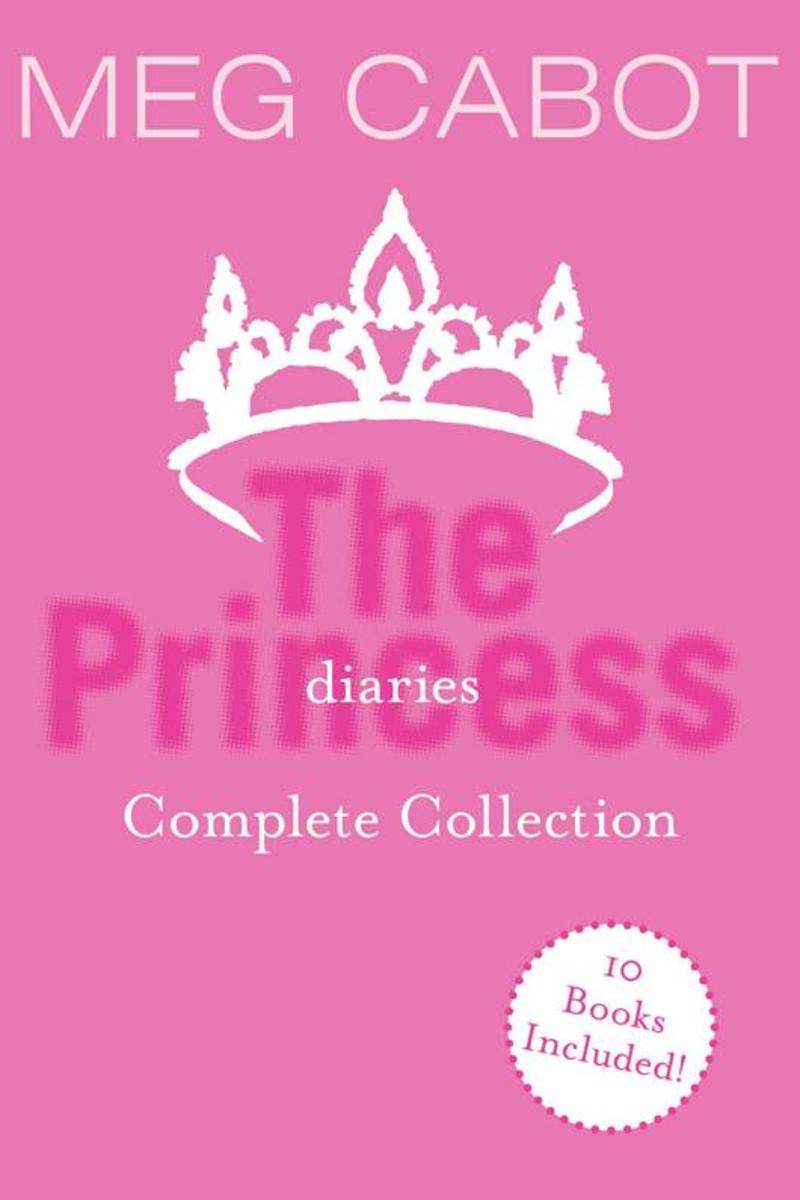
Tim Green's Football Collection
¥250.77
New York Times bestselling author and former NFL defensive end Tim Green's football stories are packed with sports action and emotional heart that will keep kids on the edge of their seats. This collection contains four bestselling novels in the series.The Big Time: Things couldn't be going better for Troy White. The Atlanta Falcons' football genius is at the top of his game, helping the team get to the playoffs. Agents and lawyers are knocking on his door with big-money offers for the upcoming season. And his own football team has just won the Georgia State Championship! Troy's celebrating with his friends at linebacker Seth Halloway's mansion when another lawyer comes knocking—and he says, "I think I'm your father." In that instant, Troy's life is changed.Deep Zone: From the moment two football champs cross paths, Troy White and Ty Lewis begin to size each other up. But when the two rivals find themselves somehow tangled in the same dangerous web of deceit, they discover that they have more in common than their skill at football. Uniting Troy, first seen in the New York Times bestselling Football Genius, and Ty, who was chased by the Mafia in Football Hero, this fourth book in the Football Genius series delivers high-stakes action on and off the field.Perfect Season: Troy's dreams of the big time have backfired. Sure, he's moved to New Jersey to start his new job as "genius" for the New York Jets, but his dad has taken his entire salary, leaving Troy and his mom broke. Now Troy has no hope of going to private school and playing for a football powerhouse with his cousin Ty. But when he gets Seth to coach his public school team, Troy feels ready for a perfect season. He doesn't guess that he'll be struggling against those who want him to lose. When Troy's talent for calling plays slips and his abilities as a quarterback are threatened, he's got to dig deep.Unstoppable: If anyone understands the phrase "tough luck," it's Harrison. As a foster kid in a cruel home, he knows his dream of one day playing in the NFL is a longshot. Then Harrison is brought into a new home with kind, loving parents—his new dad is even a football coach. But Harrison's good luck can't last forever. When a routine sports injury leads to a devastating diagnosis, it will take every ounce of Harrison's determination not to give up for good. Inspired by interviews with real-life cancer survivors and insider sports experience, this unforgettable New York Times bestseller shows a brave boy who learns what it truly means to be unstoppable. As National Ambassador for Young People's Literature emeritus Jon Scieszka said, Unstoppable is "absolutely heroic, and something every guy should read."

Vampire Diaries: The First Bite 4-Book Collection
¥348.93
Sink your teeth into the Vampire Diaries! This collection includes the first four can't-miss volumes from L. J. Smith.The Vampire Diaries: The Awakening: A deadly love triangle:Elena: beautiful and popular, the girl who can have any guy she wantsStefan: brooding and mysterious, desperately trying to resist his desire for Elena . . . for her own good.Damon: sexy, dangerous, and driven by an urge for revenge against Stefan, the brother who betrayed himElena finds herself drawn to both brothers . . . who will she choose?The Vampire Diaries: The Struggle: Torn between two vampire brothers:Damon: determined to make Elena his, he'd kill his own brother to possess herStefan: desperate for the power to destroy Damon, and protect Elena, he gives in to his thirst for human bloodElena: the girl who can have anyone finds herself in the middle of a love triangle . . . one that might turn deadlyThe Vampire Diaries: The Fury: Love can kill:Elena: with Damon at her side, and wild with her craving for blood, the changed Elena struggles to control her desiresDamon: his hunger for the golden girl wars with his hunger for revenge against StefanStefan: tormented after losing Elena, he will do anything to get her back. Even if it means becoming what he once despised. . . .Getting what they want may come at a deadly cost.The Vampire Diaries: Dark Reunion: The Final Conflict...The Last Deadly Kiss:Elena: now she rises from the dead to recreate the powerful vampire trioStefan: summoned by Elena, he keeps a promise to her and fights the most terrifying evil he's ever facedDamon: joining the brother he once called enemy, Damon battles this new horror with strength, cunning, and deadly charm.

World of Howl Collection
¥261.65
One of the most memorable and irresistible characters in all of literature—the Wizard Howl—is introduced in Diana Wynne Jones's classic fantasy novel Howl's Moving Castle and makes guest appearances in two stand-alone sequel novels, Castle in the Air and House of Many Ways. Howl's Moving Castle was adapted into an acclaimed and Academy Award-nominated film of the same name, produced by Studio Ghibli and directed by Hayao Miyazaki.Sophie Hatter never intended to set out and seek her fortune. The eldest of three sisters, Sophie thought she was destined to fail. That all changed the day the Witch of the Waste turned her into an old woman. In order to lift the spell, Sophie barges into Wizard Howl's moving castle and strikes a bargain with Calcifer, his fire demon. But Howl is outrunning a curse of his own, and soon Sophie realizes that nothing is as it appears. . . . Howl, Sophie, and Calcifer return in both Castle in the Air and The House of Many Ways, two stand-alone sequels full of mayhem, secrets, and magic.

Tiffany Aching 4-Book Collection
¥323.63
This collection includes all four Tiffany Aching novels in Terry Pratchett's beloved and bestselling Discworld series.The Wee Free Men: Armed with only a frying pan and her common sense, young witch-to-be Tiffany Aching must defend her home against the monsters of Fairyland. Luckily she has some very unusual help: the local Nac Mac Feegle—aka the Wee Free Men—a clan of fierce, sheep-stealing, sword-wielding, six-inch-high blue men. Together they must face headless horsemen, ferocious grimhounds, terrifying dreams come true, and ultimately the sinister Queen of the Elves herself. . . .A Hat Full of Sky: Tiffany Aching is ready to begin her apprenticeship in magic. She expects spells and magic—not chores and ill-tempered nanny goats! Surely there must be more to witchcraft than this!What Tiffany doesn't know is that an insidious, disembodied creature is pursuing her. In the end, it will take all of Tiffany's inner strength to save herself ... if it can be done at all.Wintersmith: When the Spirit of Winter takes a fancy to Tiffany Aching, he wants her to stay in his gleaming, frozen world. Forever. It will take the young witch's skill and cunning, as well as help from the legendary Granny Weatherwax and the irrepressible Wee Free Men, to survive until Spring. Because if Tiffany doesn't make it to Spring—Spring won't come.I Shall Wear Midnight: As the witch of the Chalk, Tiffany Aching performs the distinctly unglamorous work of caring for the needy. But someone—or something—is inciting fear, generating dark thoughts and angry murmurs against witches. Tiffany must find the source of unrest and defeat the evil at its root. Aided by the tiny-but-tough Wee Free Men, Tiffany faces a dire challenge, for if she falls, the whole Chalk falls with her. . . .

The Princess Diaries Complete Collection
¥981.50
Meg Cabot's bestselling Princess Diaries series has delighted millions of middle grade and teen readers, and it was turned into the wildly popular Disney movies of the same name, starring Anne Hathaway and Julie Andrews. This collection contains all ten of the novels following Mia as she attempts to navigate high school, boys, and…princess training.Includes:The Princess DiariesThe Princess Diaries, Volume II: Princess in the SpotlightThe Princess Diaries, Volume III: Princess in LoveThe Princess Diaries, Volume IV: Princess in WaitingThe Princess Diaries, Volume V: Princess in PinkThe Princess Diaries, Volume VI: Princess in TrainingThe Princess Diaries, Volume VII: Party PrincessThe Princess Diaries, Volume VIII: Princess on the BrinkThe Princess Diaries, Volume IX: Princess MiaThe Princess Diaries, Volume X: Forever Princess

The Obsidian Temple
¥48.39
After a harrowing escape to the desert, Sulis Hasifel finds her calling is not yet fulfilled. Traveling to the Obsidian Temple—the site of an ancient divine battle—Sulis is tasked with mentoring Ava, a young girl with a troubled past. Together, they join a group of magically gifted warriors to re-make the very fabric of the universe. But the fate of the world hinges on whether Ava can harness her power, and some trials cannot be overcome.Returning to Illian, Sulis's twin Kadar finds that his lover, Farrah, has abandoned their newborn daughter for the revolutionary cause. Not willing to give up his dream of a family, Kadar vows to stay by Farrah's side. But when he finds that Farrah is willing to anger the gods to aid the Forsaken caste's uprising, and as she steps farther down a violent and dark path, Kadar must decide if he will help her…or let the world spin out of control.In this mesmerizing sequel to Desert Rising, Kelley Grant brings us back to the cities of Illian and Shpeth, drawing her epic fantasy tale closer to the trilogy's stunning conclusion.

Across the Long Sea
¥49.05
The gripping follow-up to Stonehill DownsAs the most valuable asset in the kingdom of Wilhaiim, Malachi Doyle has many responsibilities—protector, assassin, detective, and King Renault's right-hand man. And until he met Avani in the cursed village of Stonehill Downs, he believed he was the last of his kind: a magus who can communicate with the dead.But Wilhaiim is left vulnerable when Mal and his page, Liam, are kidnapped and ferried across the Long Sea to a warring kingdom in search of its own magus. To make matters worse, a springtime plague is rapidly spreading, and beneath the earth the sidhe are preparing for war. With Mal missing and presumed dead, Avani reluctantly takes his place as Wilhaiim's magus. But her powers are unreliable and untested, her many allies are treacherous, and she is certain Mal is alive. Will she be able to keep Wilhaiim—and herself—safe?

Deadly Shaker Spring
¥42.03
We have frightening enemies living among us, known by their strange dress. These so-called Shakers are shrewd and canny. . .a scourge; a tumor that must be sliced from our side . .Sister Rose Callahan read the printed flyer and shivered. Its message terrified her. She was aware that Believers had sometimes been objects of resentment from the outside world, but nothing like this. Who could write such thingsAnd who could be responsible for recent acts of violence directed against the peaceful Shaker community?A sister had suffered a mysterious wound to the head; a sackful of rats were set loose in the schoolroom, food had been stolen -- and now a hate-filled message points to continued mischief. Sister Rose, recently honored with the position of Eldress despite her youth, seeks clues in the journals of her aged predecessor. She discovers a shocking similarity to outrages perpetrated years before, as well as a scandalous secret about a present-day sister. Now Rose must look both outside and within the cloistered religious community to find clues that link an old murder, a recent death, and an unknown enemy whose thirst for revenge overrides the ultimate sin...of murder.

Breakwater Bay
¥84.16
An abandoned baby, a glorious old Newport mansion, and awakening romance swirl the glittering waters of Breakwater Bay . . . Preservationist Meri Hollis loves her latest project, restoring one of Newport's forgotten Gilded Age mansions. And with summer approaching, she'll be able to spend more time with her grandmother on the Rhode Island shore. She has a great job, a loving family, and she's pretty sure her boyfriend is going to propose on her thirtieth birthday.But everything Meri believes about family, happiness, truth, and love is shattered when her family's darkest secret is exposed. Thirty years before, Meri's neighbor and friend, Alden Corrigan, took his father's dinghy out to fish. In a sudden storm, he rushed to help a woman stranded on the breakwater. She was just a girl . . . a very pregnant girl who disappeared soon after they reached safety—but not before she left behind a special gift. Now that the truth is out, life will change for everyone in Breakwater Bay, and Meri and Alden will have to make decisions that could ensure their future together . . . or separate them for good.

Whisper Beach
¥90.51
When a group of friends reunite in the idyllic beach town where they grew up, they must reevaluate their loyalty to one another or lose their friendship foreverTwelve years ago, Vanessa "Van" Moran fell in love and lost her virginity—but not to the same boy. She fled Whisper Beach desperate and pregnant, never telling a soul about her secret. Now a professional Manhattan organizer, she must return home for the first time to attend the funeral of her best friend's husband. Van intends to only stay for a weekend, but her plans fall by the wayside as the troubles of this coastal town draw her in.Dorie, the owner of the pier's infamous Blue Crab Restaurant where Van and her friends worked as teenagers, enlists Van's help to save the nearly bankrupt eatery. While Van throws herself into this new task, the man she once loved reenters her life, willing to pick up where they left off.As the restaurant begins to thrive and Van reconnects with old friends, trouble comes from an unexpected source and she realizes she must face the decisions of her past or sacrifice this new life she has so carefully built.For Van, this summer will test the meaning of friendship and trust—and how far love can bend before it breaks.

Night of the Living Deb
¥49.05
The fourth fun installment in the Debutante Dropout series finds ex-debutante Andy Kendricks following a cold lead into a hot Dallas strip club.Renegade rich girl Andy Kendricks isn't the belle of any Dallas ball—and that's just the way the debutante dropout likes it! She's got a good life and a great man: her defense attorney boyfriend, Brian Malone. Brian's such a straight arrow that he had to be dragged kicking and screaming to a close friend's bachelor party at a sleazy local "gentlemen's club."So why is the groom-to-be saying that Brian left the bacchanal arm-in-arm with the hottest body in the Lone Star StateAnd what was that hot body doing stone-cold dead in the trunk of Brian's carAnd where is Brian, anywayThe cops are looking for Andy's allegedly unfaithful/possibly homicidal beau, who hasn't been seen since the party. But Andy can't believe her upstanding lover is a murdering fool, and she's determined to prove it—though she may end up with a lot more broken than just her heart.

The Lone Star Lonely Hearts Club
¥49.05
Andy Kendricks is back in the third sassy and irresistible installment in Susan McBride's Debutante Dropout series … and this time she's teaming up with her high-society mama to catch a killer who's targeting rich, lonely widows. Wealthy Texas widows need loving too … which is why Bebe Kent joined a dating service for "discriminating" seniors soon after relocating to the swanky Belle Meade retirement community. Unfortunately, Bebe didn't even live long enough to meet "Mr. Right." And though doctors declared her death totally natural, extravagant blue-blooded Dallas socialite Cissy Blevins Kendricks believes her old friend's demise was hastened—and she's ready to check herself into Belle Meade incognito to prove it. Cissy's rebellious, sometimes-sleuthing daughter, Andrea, wants no part of her mother's crazy schemes—yet she's anything but pleased that Cissy is going off on her own, playing a highbrow Miss Marple. So she has no choice but to join her mom in search of the truth—especially when more well-heeled widows start turning up dead …

The Norfolk Mystery
¥48.91
Love Miss MarpleAdore Holmes and WatsonProfessor Morley's guide to Norfolk is a story of bygone England: quaint villages, eccentric locals—and murder …It is 1937, and disillusioned Spanish Civil War veteran Stephen Sefton is broke. So when he sees a mysterious advertisement for a job where "intelligence is essential," he eagerly applies.Thus begins Sefton's association with Professor Swanton Morley, an omnivorous intellect. Morley's latest project is a history of traditional England, with a guide to every county.They start in Norfolk, but when the vicar of Blakeney is found hanging from his church's bell rope, Morley and Sefton find themselves drawn into a rather more fiendish plot. Did the reverend really take his own life, or is there something darker afoot?A must-read for fans of Sir Arthur Conan Doyle, Agatha Christie, and Charles Todd, this novel includes plenty of murder, mystery, and mayhem to confound.

Ferals
¥38.72
Ferals is the first book in a dark, action-packed trilogy that’s part The Graveyard Book, part Batman, and all high-octane adventure.Blackstone was once a thriving metropolis. But that was before the Dark Summer—a wave of violence and crime that swept through the city eight years ago, orchestrated by the fearsome Spinning Man. Now the Spinning Man is on the move again, and a boy named Caw is about to be caught in his web.Caw has never questioned his ability to communicate with crows. But as the threat of a new Dark Summer looms, Caw discovers the underground world of Blackstone’s ferals—those with the power to control animals. Caw is one of them. And to save his city, he must quickly master abilities he never knew he had . . . and prepare to defeat a darkness he never could have imagined.

Summerlong
¥83.03
The author of Please Don't Come Back from the Moon and My American Unhappiness delivers his breakout novel: a deft and hilarious exploration of the simmering tensions beneath the surface of a contented marriage that explode in the bedrooms and backyards of a small town over the course of a long, hot summerIn the sweltering heat of one summer in a small Midwestern town, Claire and Don Lowry discover that married life isn't quite what they'd predicted.One night Don, a father of two, leaves his house for an evening stroll, only to wake up the next morning stoned and lying in a hammock next to a young woman he barely knows. Meanwhile, his wife, Claire, leaves the house to go on a midnight run—only to find herself bumming cigarettes and beer outside the all-night convenience store.As the summer lingers and the temperature rises, this quotidian town's adults grow wilder and more reckless while their children grow increasingly confused. Claire, Don, and their neighbors and friends find themselves on an existential odyssey, exploring the most puzzling quandaries of marriage and maturity. When does a fantasy become infidelityWhen does compromise incite resentmentWhen does routine become boring monotonyCan Claire and Don survive everything that befalls them in this one summer, forgive their mistakes, and begin again?Award-winning writer Dean Bakopoulos delivers a brutally honest and incredibly funny novel about the strange and tenuous ties that bind us, and the strange and unlikely places we find connection. Full of mirth, melancholy, and redemption, Summerlong explores what happens when life goes awry.

Dead Zone
¥60.87
Homeland?meets Marie Lu’s?Legend?in the explosive sequel to?Blackout, which #1?New York Times?bestselling author Ally Condie called “a thrilling combination of Wells’s trademark twists and terror. Fantastic!”It began with a virus. Then a series of attacks erupted across the nation. Now America is at war—and a handful of teens with impossible powers are its only defense.In?Dead Zone, Robison Wells delivers his most nail-bitingly tense read yet—and an electrifying conclusion to a two-book series that’s perfect for fans of?The Maze Runner?and?I Am Number Four.

Thanhha Lai Young Readers' Collection
¥107.82
Acclaimed New York Times bestselling author Thanhha Lai won the National Book Award for Young People's Literature and the Newbery Honor for her debut novel, Inside Out and Back Again. This collection includes Inside Out and Back Again along with her newest novel, Listen, Slowly. Inside Out and Back Again: Inspired by the author's childhood experience of fleeing Vietnam after the Fall of Saigon and immigrating to Alabama, this coming-of-age debut novel told in verse has been celebrated for its touching child's-eye view of family and immigration. For all the ten years of her life, Hà has only known Saigon: the thrills of its markets, the joy of its traditions, and the warmth of her friends close by. But now the Vietnam War has reached her home. Hà and her family are forced to flee as Saigon falls, and they board a ship headed toward hope. In America, Hà discovers the foreign world of Alabama: the coldness of its strangers, the dullness of its food . . . and the strength of her very own family.Listen, Slowly: Twelve-year-old Mia's parents are sending her, along with her father, on a trip to Vietnam so she can learn more about her roots—and also help her grandmother figure out what really happened to Mia's grandfather during the Vietnam War. Since Mia barely knows the language or customs, she is desperately counting down the days until she can go back home. But the next few weeks are a life-changing experience. As time passes, Mia begins to have a change of heart, growing closer to her family and developing an understanding of a culture and an entire world which that she never really knew about.

Dorothy Must Die: The Other Side of the Rainbow Collection
¥327.12
There's a new wicked witch in Oz—and her name is Dorothy. The Wonderful Wizard of Oz meets Kill Bill in this edgy, fast-paced, fantasy-adventure series from New York Times bestselling author Danielle Paige. The first two novels and three novellas are available together here for the first time:Dorothy Must Die: Oz has turned into a savage dystopia under Dorothy's rule—and now a new girl from Kansas must take her down. Amy Gunn been recruited by the Revolutionary Order of the Wicked. Her mission: Remove the Tin Woodman's heart. Steal the Scarecrow's brain. Take the Lion's courage. And—Dorothy must die.The Wicked Will Rise: With the Revolutionary Order of the Wicked scattered across Oz, Amy Gumm is on her own in the twisted fairyland. As she searches the kingdom in the hopes of destroying Dorothy once and for all, Amy realizes that nothing is what it seems in Oz and everyone has their own agenda.This collection also contains the three prequel novellas No Place Like Oz, The Witch Must Burn, and The Wizard Returns.

The Madman's Daughter Trilogy: The Complete Collection
¥261.65
Megan Shepherd's gothic suspense trilogy, inspired by the stories of H.G. Wells, Robert Louis Stevenson, and Mary Shelley, is perfect for fans of Libba Bray, Leigh Bardugo, and classic horror and science fiction. This collection also contains a sneak peek of The Cage, the first book in Megan Shepherd's gripping new series about teens held captive in a human zoo by an otherworldly race.The Madman's Daughter, inspired by The Island of Dr. Moreau, is the story of Dr. Moreau's daughter Juliet, who travels to her estranged father's island only to encounter murder, madness, and a scintillating love triangle.Her Dark Curiosity: Inspired by The Strange Case of Dr. Jekyll and Mr. Hyde, this tantalizing sequel explores the hidden natures of those we love and how far we'll go to save them from themselves.A Cold Legacy: With inspiration from Mary Shelley's Frankenstein, this breathless conclusion to the Madman's Daughter trilogy explores the things we'll sacrifice to save those we love . . . even our own humanity.

Bones and Heart
¥21.51
Bones and Heart by Katherine Harbour has de*ive copy which is not yet available from the Publisher.

Dead Ringer
¥66.50
Orchestra practice hits the wrong chord when a fellow musician is found dead, and violinist (and now amateur sleuth) Midori Bishop finds herself investigating more than just a new concerto in Sarah Fox's new cozy mystery, Dead RingerMidori Bishop's life is hitting all the right notes. She has her dream job playing violin in the Point Grey Philharmonic Orchestra, and is embarking on a new relationship with the symphony's hot maestro. But when Midori finds a cellist strangled to death during a rehearsal, the maestro soon becomes the number-one suspect and Midori his only supporter.Midori sets out to prove the maestro's innocence, but soon discovers that he and many others have secrets they would rather keep hidden. For someone who was only a ringer—a temporary member of the orchestra—the dead cellist had certainly made a lot of enemies. And as the investigation takes Midori closer to the truth, the killer gears up for a grand finale—with Midori as the intended victim.




 购物车
购物车 个人中心
个人中心



